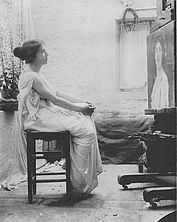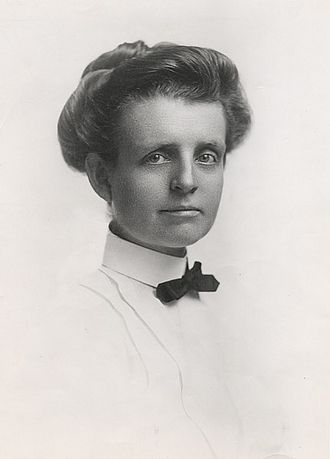Introduction
by Lola Van Wagenen
By 1900 Frances Benjamin Johnston had made a name for herself. At the age of thirty-six, she had photographed a diverse sample of Americana—from politicians to mine workers, socialites to factory women, public institutions to humble cottages. And she was making a living. In 1899 alone she completed a six-week commission photographing Washington, DC schools; served on the jury for the Second Philadelphia Salon; photographed Admiral George Dewey in Italy on his flagship the Olympia on its return from the Philippines; and ended the year with a commission to photograph the Hampton Normal and Agricultural Institute—the work for which she is most often remembered.1
Then 1900 proved even more remarkable. Johnston was selected as one of two American women delegates to the International Congress of Photography held in conjunction with the 1900 Universal Exposition in Paris. There she spoke enthusiastically on behalf of American women photographers and displayed approximately 150 photographs solicited from more than thirty women from across the country. Johnston’s Washington, DC school photographs were displayed at the Exposition promoting American “new education”, and her Hampton school photographs were featured with the American Negro Exhibit, which was designed to show the history, education, and progress of African Americans. Both the American Negro Exhibit and Johnston’s work received grand prizes.2
Extraordinarily energetic, innovative, and ambitious—Johnston worked at ease in any setting and she wrote prolifically. Her articles appeared in prominent publications: Demorest's Family Magazine, Cosmopolitan, Frank Leslie’s Magazine, Harper’s Weekly, and the Ladies' Home Journal. Readers of popular magazines could hardly miss seeing her articles or images.3
In 1947 Johnston gifted her prints, negatives, and correspondence to the Library of Congress, and returned in triumph for an exhibit of her work.4 Today the LC’s Prints and Photographs Division holds approximately 20,000 photographic prints and 3,700 glass and film negatives, while the LC’s Manuscript Division has a finding aid for a 17,000-item collection.5 In 1966, after an album of Johnston's Hampton photographs was donated to the Museum of Modern Art, 44 of the 159 platinum prints were featured in an exhibit and published as The Hampton Album. Lincoln Kiersten, album donor and editor of the book, called her images “inexhaustibly revealing.”6 Nonetheless, for years Johnston, like most other female photographers of her era, has remained a mere footnote in the history of American photography.7
In the early 1970s, Pete Daniel and Raymond Smock stumbled upon the collection of Frances Benjamin Johnston's photographs at the Library of Congress and subsequently published A Talent for Detail: The Photographs of Miss Frances Benjamin Johnston 1889–1910 (1974). This first significant study of Johnston remained the only monograph highlighting her life and work for almost thirty years. As late as 2001, one scholar wrote, in a review of a new book about Johnston, that, with minor exceptions, most accounts of Johnston were largely derivative of Daniel and Smock’s study.8
Today, through the recovery efforts of scholars such as Pete Daniel and Raymond Smock as well as other scholars researching photography’s history, Johnston is recognized as one of the first women of American photography. Increasingly her images are the subject of critical analysis for the richness of their political and cultural meanings as well as for their artistic and creative merits.
Clio Visualizing History is grateful to Dr. Smock for facilitating this exhibit, and to both authors for granting permission to publish a modified version of the text from Chapter One, “Photobiography,” in A Talent for Detail. The images accompanying the text are not necessarily presented in the same order or manner as they appear in A Talent for Detail; they have been selected specifically for this online exhibit format. In addition, some captions have been edited.
The photographs included in this exhibit are held by the Library of Congress and represent only a small sample of the diversity and scope of Johnston’s work. A Talent for Detail: The Photographs of Miss Frances Benjamin Johnston 1889-1910 includes 179 images. To view a larger version, click on the image.




